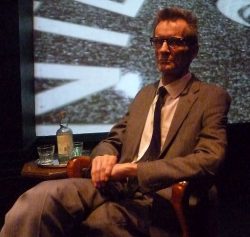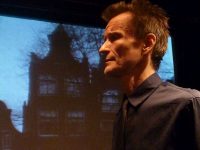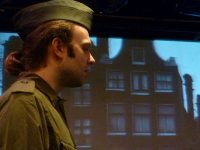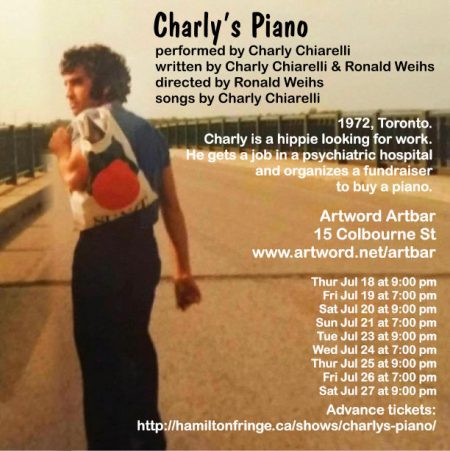
July 18 to 28, 2019: Artword Artbar, a Hamilton Fringe Festival BYOV, hosts Artword Theatre’s 60-minute version of Charly’s Piano, performed by Charly Chiarelli. The show is written by Charly Chiarelli and Ronald Weihs, directed by Ronald Weihs, with songs by Charly Chiarelli.
Charly’s Piano tells the true tale of Charly as a young hippie looking for work in Toronto in 1972. He gets a job in a psychiatric hospital, and organizes a fundraising concert by patients and doctors to buy a piano.
Tickets: $12 Tickets: hamiltonfringe.ca/shows/charlys-piano/
Runs 60 mins. Showtimes: 18 Jul Thu: 9:00 pm, 19 Jul Fri: 7:00 pm,
20 Jul Sat: 9:00 pm, 21 Jul Sun: 7:00 pm, 23 Jul Tue: 9:00 pm, 24 Jul Wed: 7:00 pm,
25 Jul Thu: 9:00 pm, 26 Jul Fri: 7:00 pm, 27 Jul Sat: 9:00 pm.
Charly Chiarelli and Ronald Weihs originally developed Charly’s Piano back in December 2017 as a two-act play. In 2019, the Fringe 60-minute time slot offered a challenging opportunity to develop a shorter version. They took out the Christmas carols and tightened up some of the songs. They cut out a few of the anecdotes about the patients that Charly worked with. And there we have it, a fine new version of the show. The projected image sequences are still there for all the songs:
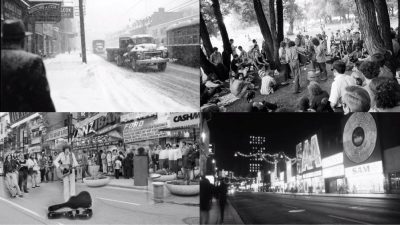 Something About Toronto
Something About Toronto
Winter Time Blues
I Ponder
The Magic of Cats
Down and Dirty Blues
A Simple Minstrel’s Tune
Have a Good Time
When the Well Runs Dry
Pills they keep popping…
Something About Toronto
Fringe Press and Reviews 2019:
Charly’s Piano, Fringe advance article by Gary Smith, Hamilton Spectator, July 12, 2019
Hamilton favourite Charly Chiarelli brings back his wonderful remembrance of falling in love with music as a young hippie on the streets of Toronto. He takes us inside his complex world as he organizes a concert for patients and doctors in a psychiatric hospital. A warm, touching 60-minute show by Chiarelli and Ron Weihs that provokes laughter and more than a few tears.
Charly’s Piano 2019 review Raise The Hammer
July 25, 2019 https://www.raisethehammer.org/fringe/3144/charlys_piano
By Marianne Daly
Charly’s Piano is the interesting, inspiring and funny true story about Charly Chiarelli’s time working in a psychiatric hospital in 1972. This version of the story is terrific, with direction and background guitar by Artword Artbar’s own Ronald Weihs and black-and-white photos of Toronto projected on the back of the stage.
Charly is an animated and expressive storyteller who plays a mean harmonica. This show features Charly acting out many of the people he met when he worked at the Clark Institute. The story is packed with Charly’s self-deprecating humour and his open-hearted acceptance of quirky characters, and conveys a good-natured feeling of “hey, we’re all in this together, trying to figure it out as best we can.”
It also has a healthy dose of “fake it till you make it” when Charly organizes a variety show fundraiser to buy a piano for some informal music therapy.
Charly’s story ends on a rather sad note, when Charly goes back to visit the hospital several years later. It is a powerful ending, but Yours truly – ever the optimist – hopes the future is brighter for music therapy in psychiatric programs. Two recent visits I made to the psychiatric departments at St. Joseph’s give me faith that there is reason to hope.
This is a show that can inspire mental health professionals – and advocates like myself – to see how important music therapy is. In the meantime, go see Charly’s Piano, for wonderful stories and music guaranteed to make you feel better!
Marianne Daly is a writer, storyteller and retired high school teacher.
Charlys Piano, ViewMagazine 2019 online Fringe Reviews
By Arthur Bullock
Charly’s Piano is a charming true story of empathy and compassion, set in early-1970s Toronto. The protagonist and storyteller, Charly Chiarelli, recounts his time at the Clarke Institute of Psychiatry, working as a psychiatric assistant. Throughout the course of the story, Charly gets to know the staff and patients of the institute, forming close bonds with all of them. Each patient is treated like an individual, with the dignity and respect that they rightfully deserve. As a Fringe storyteller, Chiarelli is friendly and energetic, speaking to the audience as though he was having a warm conversation with them. Chiarelli also incorporates live music into his act: he will periodically sing a blues tune and play the harmonica, while Ronald Weihs accompanies him on the acoustic guitar. Charly’s Piano is not just a story: more than anything else, it is an invitation to step into someone else’s shoes. It sheds light on the lives of mental health patients just as much as it recounts Chiarelli’s own life, and it reminds us of the incredible potential for change that one person can have.



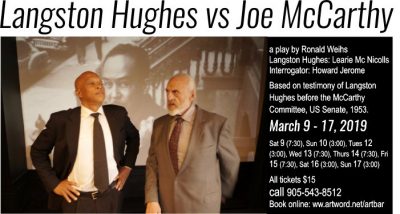

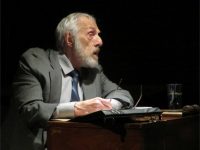
 December 1 to 15, 2018. Artword Theatre’s delightful Christmas comedy Scroogissimo returns for a fourth time to Artword Artbar. Hamilton’s North End meets Charles Dickens in a wacky script by Ryan Sero and Charly Chiarelli, directed by Ronald Weihs – and the original cast!
December 1 to 15, 2018. Artword Theatre’s delightful Christmas comedy Scroogissimo returns for a fourth time to Artword Artbar. Hamilton’s North End meets Charles Dickens in a wacky script by Ryan Sero and Charly Chiarelli, directed by Ronald Weihs – and the original cast!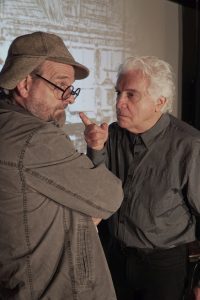
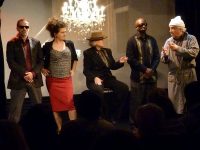
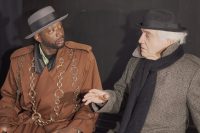

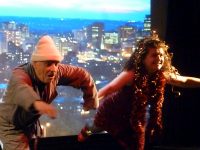

 July 19 to 28, 2018. Hamilton Fringe Festival. The Man in the Vault (an Artword Theatre production). Written and directed by Ronald Weihs. Produced and designed by Judith Sandiford. Performed by Mariam Bekhet, Jordan Campbell, Jason Thompson.
July 19 to 28, 2018. Hamilton Fringe Festival. The Man in the Vault (an Artword Theatre production). Written and directed by Ronald Weihs. Produced and designed by Judith Sandiford. Performed by Mariam Bekhet, Jordan Campbell, Jason Thompson. 
